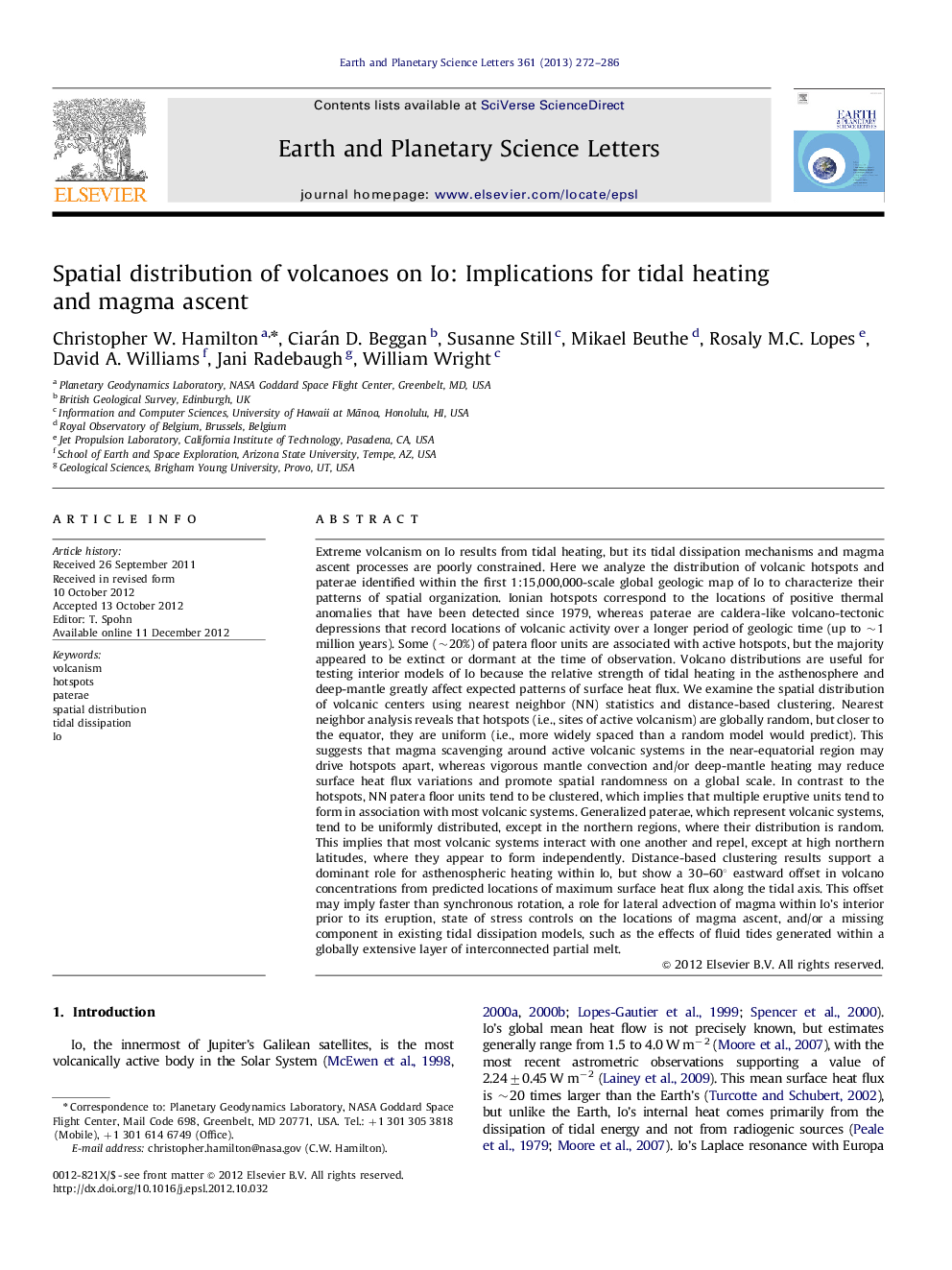| Article ID | Journal | Published Year | Pages | File Type |
|---|---|---|---|---|
| 4677180 | Earth and Planetary Science Letters | 2013 | 15 Pages |
Extreme volcanism on Io results from tidal heating, but its tidal dissipation mechanisms and magma ascent processes are poorly constrained. Here we analyze the distribution of volcanic hotspots and paterae identified within the first 1:15,000,000-scale global geologic map of Io to characterize their patterns of spatial organization. Ionian hotspots correspond to the locations of positive thermal anomalies that have been detected since 1979, whereas paterae are caldera-like volcano-tectonic depressions that record locations of volcanic activity over a longer period of geologic time (up to ∼1 million years). Some (∼20%) of patera floor units are associated with active hotspots, but the majority appeared to be extinct or dormant at the time of observation. Volcano distributions are useful for testing interior models of Io because the relative strength of tidal heating in the asthenosphere and deep-mantle greatly affect expected patterns of surface heat flux. We examine the spatial distribution of volcanic centers using nearest neighbor (NN) statistics and distance-based clustering. Nearest neighbor analysis reveals that hotspots (i.e., sites of active volcanism) are globally random, but closer to the equator, they are uniform (i.e., more widely spaced than a random model would predict). This suggests that magma scavenging around active volcanic systems in the near-equatorial region may drive hotspots apart, whereas vigorous mantle convection and/or deep-mantle heating may reduce surface heat flux variations and promote spatial randomness on a global scale. In contrast to the hotspots, NN patera floor units tend to be clustered, which implies that multiple eruptive units tend to form in association with most volcanic systems. Generalized paterae, which represent volcanic systems, tend to be uniformly distributed, except in the northern regions, where their distribution is random. This implies that most volcanic systems interact with one another and repel, except at high northern latitudes, where they appear to form independently. Distance-based clustering results support a dominant role for asthenospheric heating within Io, but show a 30–60° eastward offset in volcano concentrations from predicted locations of maximum surface heat flux along the tidal axis. This offset may imply faster than synchronous rotation, a role for lateral advection of magma within Io's interior prior to its eruption, state of stress controls on the locations of magma ascent, and/or a missing component in existing tidal dissipation models, such as the effects of fluid tides generated within a globally extensive layer of interconnected partial melt.
► We examine the spatial distribution of hotspots, patera floor units, and paterae on Io. ► The distribution of volcanic centers generally supports asthenospheric-dominated tidal heating models. ► However, volcanic concentrations are offset 30–60° from predicted surface heat flux maxima. ► Asynchronous rotation, state of stress controls on magma ascent, and/or fluid body tides may explain the offset.
